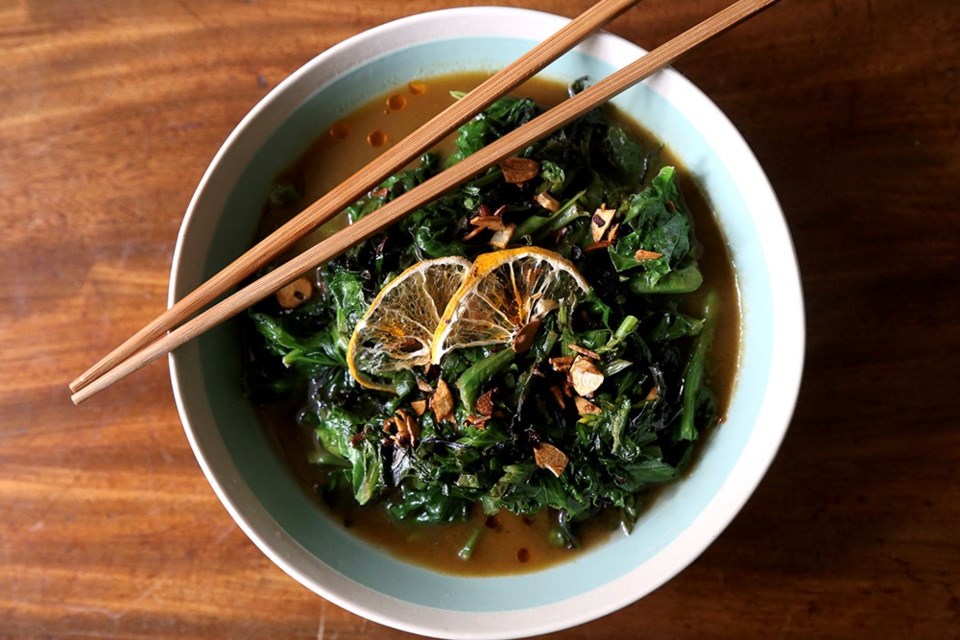Eat your greens. An apple a day. … Sage advice – or not?
The truth of the matter is that, for many complex reasons related to politics, special interests, and industrial food systems, we do not have access to the complete and honest information we need to make informed decisions about most of the fruits and vegetables offered for sale, how and where they are grown, and how post-harvest management affects our physical and mental wellbeing.
Those pricey and beautiful looking greens and that shiny crisp apple might in fact have grown up in, or be carrying toxic levels of, agricultural sector killers – those scary elements ending with “cides,” designed to search out and destroy so-called enemies within the soil food web of life.
Food toxicity is a long and complicated story for another day, but suffice it to say that eating homegrown and locally grown produce can vastly improve our physical and mental health and happiness, and on so many levels. Plus, growing food is cool. What’s not to love about being self-sufficient and taking some measure of control?
The simple act of deciding to grow even the smallest amount of food organically and in the smallest of spaces, and of setting time aside in which to do it, adds layers of physical and mental benefit to the primal practice of feeding our bodies nutritious whole food that we know with certainty contains nothing but good intentions and fresh-picked goodness.
The requisite slowing down, the building of living soil, the planting of seeds or seedlings, the contemplative nurturing, the deliberate harvesting and preparation or preserving, even the farmers market transaction between consumer of just-picked nutrition and the local farmer who grew it – these are all beautiful, intimate, distinctly human rituals.
Most of us can, if we choose, grow abundantly in limited space on decks and on patios, in small yards and on rooftops. We can share our successes and our failures at table with family and friends. In a world of uncertainty and chaos, communing over healthy food is a hopeful act of resilience and positivity, and it starts with the smallest of steps.
We can start simply, growing just a handful of hardy, leafy green vegetables. If we pay attention, the plants will teach us what they need to thrive, and in return provide nourishment.
Resilient and ever-cropping nutrient-dense greens like arugula, mustards, kales, chard, spinach, collards and many perennial herbs are surprisingly easy to grow. These plants do well in direct or part sun, during all but the coldest and wettest months of the year. They will live happily in healthy soil in pots, planters, raised beds, in the ground, in an old fruit box, or in a five-gallon bucket drilled with drain holes.
Ironically, some of the most beautiful, elegant, and nutritious meals that I prepare for my family are based on a small but perpetual supply of the leaves, tender stalks, shoots and flowers of these most resilient of vegetables – and bonus, all components can be preserved and/or frozen for winter consumption.
Kale, for example, can be braised, roasted, steamed, sautéed, fried, pickled and preserved. Kale can be used in salads, smoothies, in juices, lasagna, kimchi, breads, pasta, soup, tea, even ice cream. The list of delicious and nutritious possibilities is inspiring and endless.
As I write this I am feasting on a steaming bowl of chopped, fresh-picked organic kale (Russian red, and Siberian dwarf) and mustard greens (red mizuna) and shoots, flash sautéed in homegrown garlic and chili-infused olive oil plus remnant white wine, nested in a rich veggie scrap broth into which I stirred a spoonful of white miso.
Garden to table in less than 15 minutes – easy peasy, inexpensive, beautiful, delicious, and most important, highly nutritious.
I grow all of these greens without any fuss at all, from seed, in the spring and again in the fall. By harvesting individual leaves (oldest first) rather than cutting the stalks, the plants respond enthusiastically and repeatedly with new growth. When the plants do eventually go to seed, they gift yet again, one final and coveted crop of tender and highly nutritious shoots, and, of course, seed with which to begin anew.
Start small, start green. Bon appetit!
Laura Marie Neubert is a West Vancouver-based urban permaculture designer. Follow her on Instagram @upfrontandbeautiful, learn more about permaculture by visiting her Upfront & Beautiful website or email your questions to her here.
For a taste of permaculture, click on the YouTube link below:
(Video - Courtesy of West Vancouver Memorial Library)



